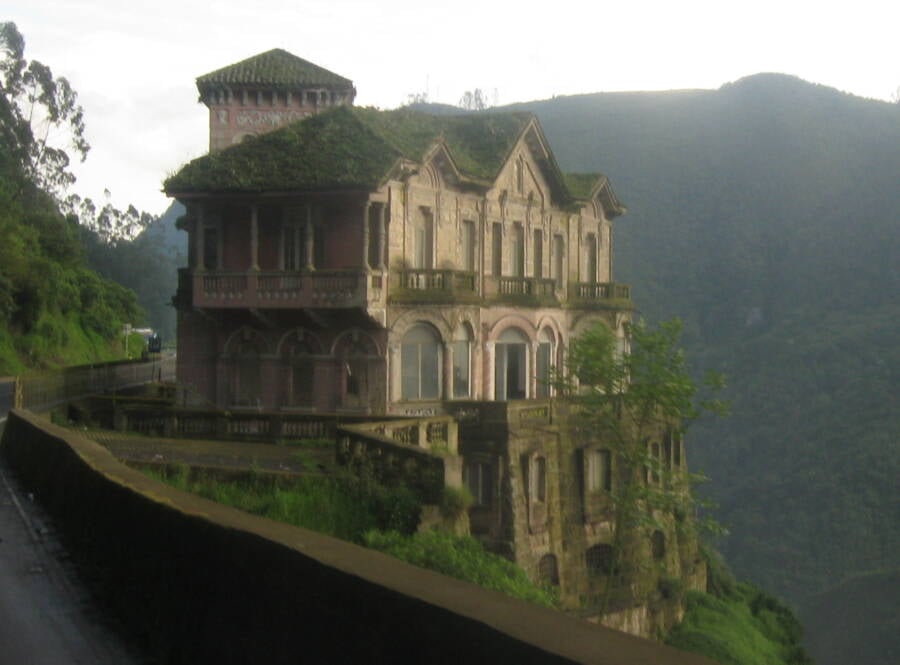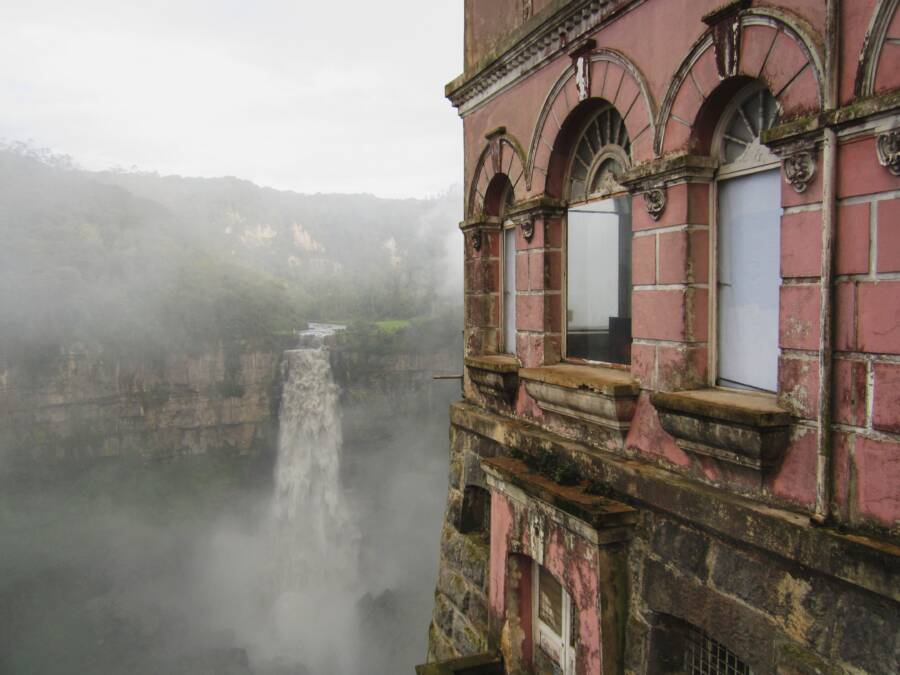The Terrifying Story Of Colombia’s Suicide Palace, One Of The Most Haunted Hotels In The World

Wikimedia CommonsInitially a private residence, the mansion was turned into a hotel in 1928 but was abandoned in the 1990s.
The Hotel del Salto, or La Casa del Salto del Tequendama, in Bogota’s San Antonio del Tequendama, Colombia was first built in 1923 overlooking the steep Tequendama waterfall and served an elite clientele. The site, though beautiful, is also purportedly haunted by centuries-old spirits who jumped to their deaths from those cliffs.
As local legend has it, the Indigenous Muisca people would jump off the Tequendama waterfalls in order to prevent being captured by Spanish conquistadors as they ravaged the continent. The Muisca believed that they wouldn’t die, but rather transform into eagles and soar back into the heavens, toward their freedom.
Of course, that story inspired countless dejected youths and depressed individuals to romanticize their own suicidal thoughts, and what was once an escape for the Indigenous and a hotel for the rich thus became a tower of death.
In its time, the hotel was incredibly stylish. It featured high windows and French architecture that the wealthy citizenry of the roaring 1920s appreciated. With wealthy tourists seeking out the most elegant place to lay their heads while visiting the Tequendama Falls area, the Hotel del Salto quickly became the go-to for anyone capable of affording it.
The hotel remained in operation for 60 years, before plans to expand into an 18-story hotel came to a halt in the 1950s. The building was beginning to show visible signs of damage by that time, and the increasingly polluted Bogota River it overlooked became a liability rather than an attraction. The haunted hotel was thus abandoned in the 1990s.
The only visitors it’s seen since then are curious photographers, history enthusiasts, and desperate people committing suicide on its property.

Wikimedia CommonsAccording to legend, the Muisca Indians would jump off the Tequendama waterfalls to prevent being captured by the Spanish, only to transform into eagles before plummeting to their deaths and soaring toward freedom.
According to Abandoned Spaces, the cliffside has since been renamed “The Jump of Tequendama.” And reports of the paranormal have wafted over the foggy countryside around the hotel ever since.
Locals believe those who’ve gone over the edge, whether intentionally or by mistake, haunt the hotel grounds. Tourists to this day are warned not to walk along the property at night, as aggravated lost souls purportedly still abound.
As it stands, the haunted hotel has since become a museum, focused on environmental protection and Colombia’s biodiversity.





